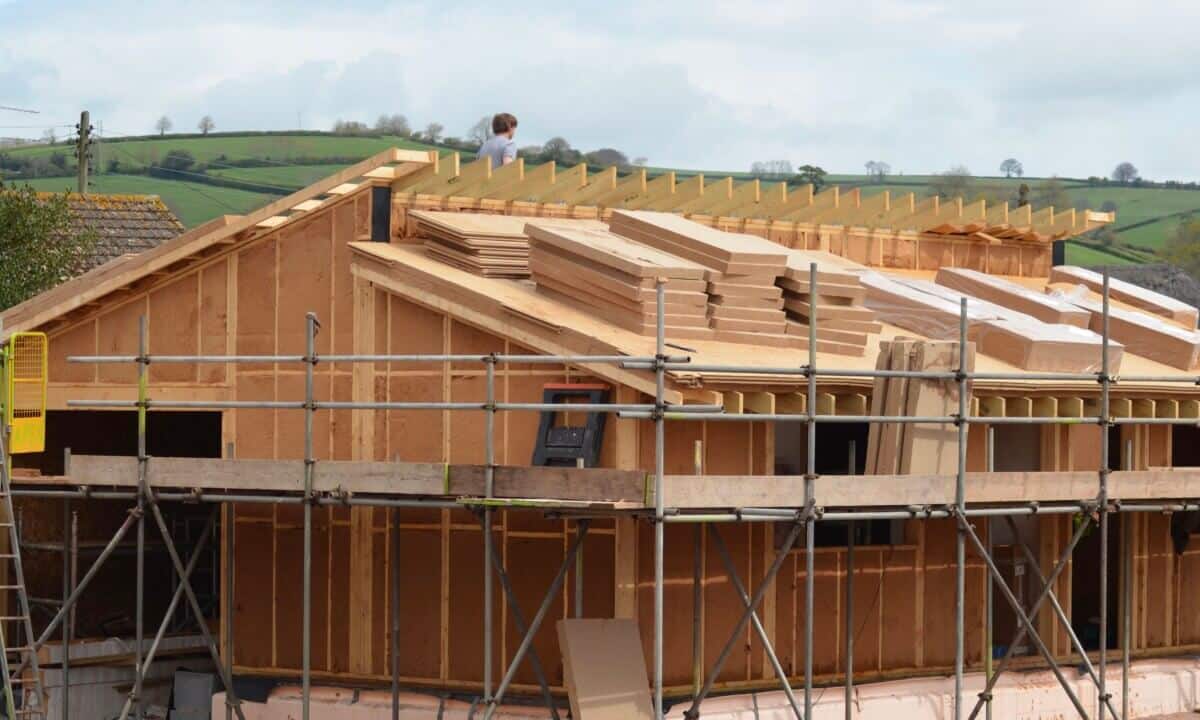SPECIFICATION GENERATOR
Find out which low impact materials are right for your building project.
Thermal Mass, Carbon Savings and the Drive for Lower Construction Costs
We regularly get asked whether it is possible to mix wood fibre insulation with synthetic insulation, to save on cost and give a lower U-value for a given thickness but to try and retain some of the benefits of wood fibre.
In many situations it is possible to mix in mineral and glass fibre insulation as they are perfectly vapour permeable enough to work with wood fibre boards. PIR, in the right location, can also be used with the flexible wood fibre insulation.

This strategy may save on cost and because it gives the same U-value, it is often assumed that the specification will function in the same way that a full wood fibre build-up would. However, it does not give you the same overall performance in any way.
Very low density synthetic insulation that has very low thermal conductivity can be used to give low U-values but due to it’s low density, it lacks the necessary thermal mass to create a stable internal environment in the summer.
Typically, flexible wood fibre insulation will store 6-12 times the heat that mineral or glass fibre will. Wood fibre insulation has very high specific heat capacity (nearly 3 times more than glass fibre and more than twice that of mineral fibre) and high density which is typically 3-6 times more than synthetic fibres. Combined these properties give it very high thermal mass and very good sound insulation.
By swapping in synthetic insulation the lack of heat storage capacity reduces the ability of the roof or wall to keep heat out in the summer and to retain heat in the spring and autumn. This in turn increases heating requirements and makes the building less comfortable in summer. Obviously it is tempting to reduce construction costs but the small cost saving in construction will quickly be lost by having to heat and cool more.
The other benefit to using a full wood fibre build-up (or natural fibre generally) is that you are locking up carbon by doing so. Plants remove the gas from the atmosphere to grow and so rather than producing CO2 to manufacture a synthetic insulation, adding to our current climate woes, you are actively helping to remove CO2 from the atmosphere by locking it in to the building.
The flexible wood fibre will lock up around 85 kg CO2 per m3 of product and, as it the most voluminous material in a build, this reduces the overall carbon foot print of the building enormously. In conjunction with CLT or timber frame construction, it is possible to build carbon neutral or even carbon negative buildings, a far cry from the typical 40-50 tonnes produced by the average UK build.
So, if you want an insulation solution that gives you excellent sound insulation, one that creates incredible thermal comfort all year round, one that is not toxic to installers, occupants or the environment, one that is robust, sustainable and durable then it is best to use the full wood fibre build-up.
If you have a project that you’d like to discuss with us or have questions about how best to insulate, please contact us.